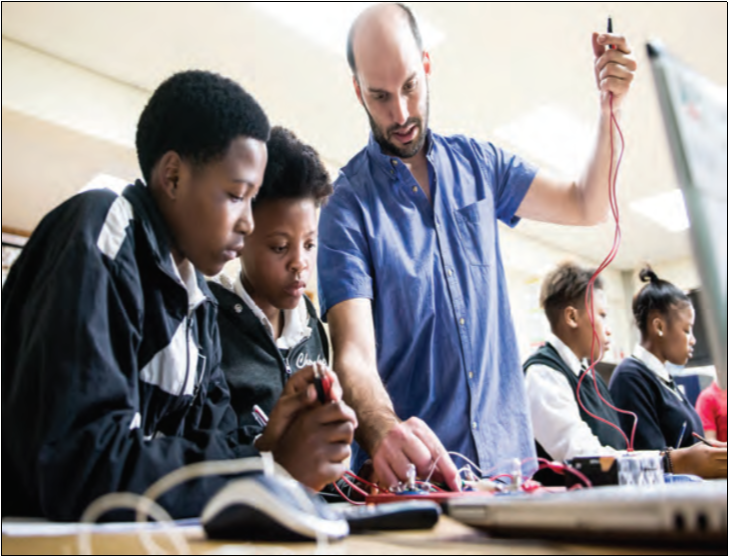“They can experience practically [through hands-on science experiments] what’s going to be taught, so that teachers can then spend a shorter time teaching it … The teachers need to maximise their time. They are under so much pressure,” said STEM in Action Programme Manager Isabel van Gend.
The current programme runs in more than 40 high schools throughout Nelson Mandela Bay, including six Northern Areas schools, namely Bertram, David Livingstone, Chapman, St James, Gelvandale and Nassrudin Islamic high schools.
Northern Areas schools only opened a few weeks ago after an almost month-long shutdown, sparked by last year’s poor provincial and citywide matric results, and alleged mismanagement by the provincial Department of Education.
Many schools have extended their schools hours and suspended sport, to enable their pupils to catch up.
Typically, STEM in Action’s practical sessions take place during pre-booked morning slots from Monday to Thursday at Missionvale Campus, and complement the theory being taught in the classroom, but they have introduced additional Friday morning and afternoon sessions – which also kicked off recently – specifically to accommodate the Northern Area schools.
“We are prepared to fit them in, to help them out. These sessions run on Fridays and other afternoons till the schools feel they’ve caught up, and then they will fit back into the normal Monday to Thursday sessions.”
STEM in Action offers physical science experiments to the entire physical science class, including their teacher. “Each learner is involved in actually doing the science experiments. For many [in our programme], it is the first time they are doing a practical or even entering a lab,” said Isabel. “The experiments help to explain the concepts they are battling with.”
Isabel said while they would like to assist all schools, they select those whose results reflect “good science teaching”, as they simply do not have capacity to teach the subject from scratch. “We build on the foundation already in place at the schools.”
STEM in Action also runs a parallel Get Ahead in Technology and Engineering (GATE) programme for learners who show the most potential.
They then attend additional physical science and study skills classes, focusing specifically on areas of science with which most learners struggle. Northern Areas learners already in this programme have been attending these classes from the start of the school year. “Although their schools were closed, we contacted them on their cell phones and encouraged them to come.”
Isabel said the programme included an “English in Science” component, where learners whose mother tongue is not English, can gain a greater understanding of the language used in science.
The purpose of STEM in Action, which is sponsored by the South African National Road Agency Limited (Sanral), is to promote careers in science and engineering.
“There are many maths interventions but not so many physical science programmes. We believe poor science marks are preventing matrics from gaining entry into many technology and engineering-related courses.”

MAKING CONNECTIONS … STEM in Action started seven years ago with 300 learners and now accommodates 2 600 learners. Stem in Action’s Tinus Sonnekus, helps Grade 10 learners with their electricity experiment.